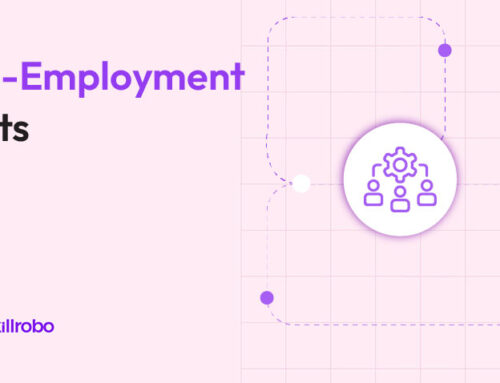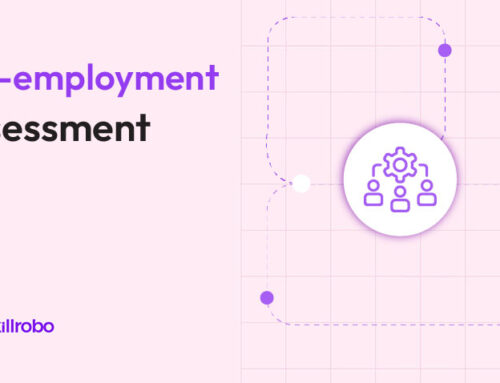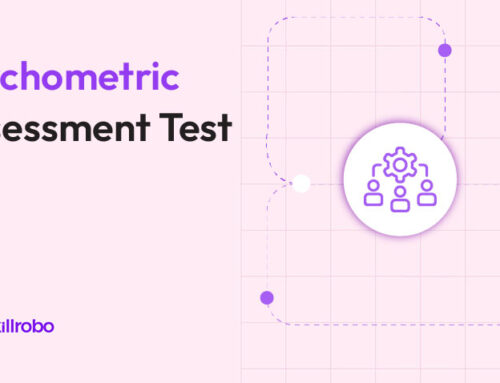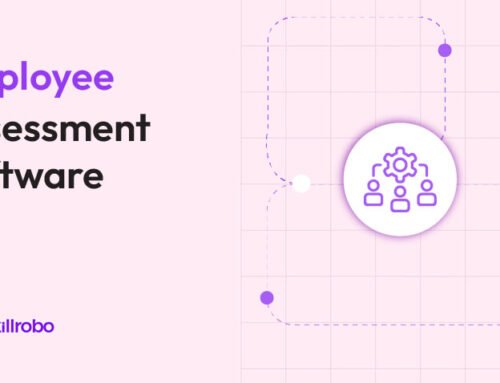Table of Contents
Related articles
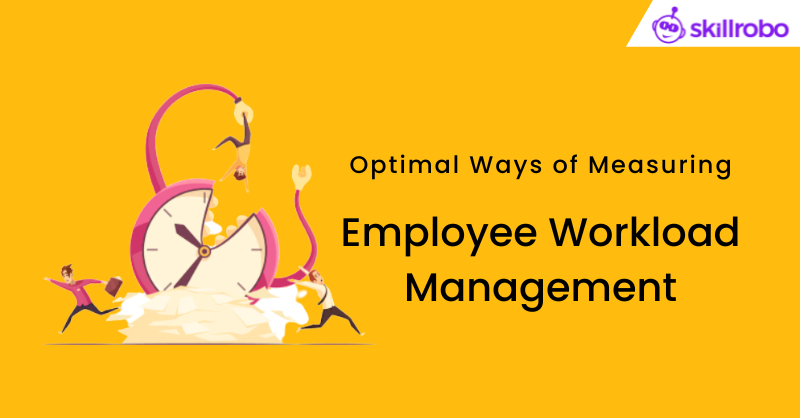
Ensuring optimal performance of the team is the primal task of a manager. A team’s performance and productivity depend largely on the way work is allocated and managed. Optimal work allocation ensures that each resource is assigned work according to their skills and competencies. The manager needs to measure and manage the workload of employees for optimal team performance.
Effective workload management also ensures that employees are not overworked or underutilized. Employee burnout is considered to be the number one reason for stress-related ailments. A Deloitte survey revealed that 91% of employees have an unmanageable amount of stress or frustration that negatively affects the quality of work.
Why is Workload Management Important?
A successful manager needs to ensure every employee is assigned the right kind of work and the right amount of work so that they perform at optimal levels. Effective measurement, distribution, and management of employee workload is needed to avoid underutilization or exploitation of employees.
A well-balanced workload management solution is essential for analyzing the team’s performance and optimal workload distribution. A recent survey by Asana on the Anatomy of Work Global Index revealed that during the COVID pandemic, employees spent 27% more time on skilled work but nearly 36% less time on strategic work. The survey also revealed that 80% of the employees reported feeling overworked and close to burnout. Also 4 out of 5 employees reported that they felt less engaged at work when they were stressed. Managing team workload effectively is key to better employee engagement and performance.
Here is why a workload management system is a must for your organization:
Impact on the Team’s Performance –
The greatest asset any business can have is its workforce; overworked overwhelmed or underutilized employees result in dissatisfaction. Employees struggling with the workload can have a negative impact on the team’s morale and productivity. Workload management enables managers to distribute work across the team more effectively so that employee burnout or work stress can be prevented.
Insights into task status –
a workload management tool helps managers stay updated on the status of tasks that are assigned to employees. Real-time insights into the tasks that the team has on their plates enable better workload management and balanced task allocation.
Optimal resource utilization –
workload management ensures that all the resources are utilized optimally. Assigning the right task to the right resource puts an end to the employee’s struggle to perform well. A well-rounded workload management solution helps in employee workload analysis and effective management of workload. Workload management solutions can be used by managers to distribute and manage workload efficiently for maximum team performance.
Effective workload management is crucial for overall business success and project performance. A good workload management system improves job satisfaction rates, and productivity, and reduces employee workload stress, turnover rates, overworking, and burnout risks. A solid workload management solution helps employees manage their workload and managers distribute workload effectively.
Ways to Distribute Employee Workload
Before managers get into the distribution of workload, it is important to create a skills matrix so that they can map employee skills against appropriate tasks and projects. A skills matrix provides managers with an overview of who can do what in the organization. Here are some tips on how to distribute workload among staff:
- Figure out the team’s workload and capacity: when you have teams scattered across multiple projects or locations, it can be challenging for managers to understand the volume of work that needs to be handled. The first step is to put together a list of projects and processes that the team is responsible for. Then, the scope and timing of each task must be determined. Finally, the priority for each task must be set based on the criticality of each task.
- Allocate resources and break down individual workloads: once you have all the tasks laid out, the next step is the allocation of work. Allocate high-priority tasks to team members based on their skills and capabilities. The start and end dates of projects/tasks must be borne in mind while allocating tasks. The task allocation details must be communicated with the appropriate resource for better employee engagement.
- Check with team members and adjust workloads as needed: in situations where team members go on unplanned leaves, adjustment or reassignment of workloads may be required. Schedule check-ins with team members to see where they stand in their work. If you feel they are overloaded with work, offer to shift or defer responsibilities as required.
- Improve team efficiency: when an employee is struggling with workload, the manager can offer help by suggesting time management strategies or by providing actionable advice on how to improve their mental health and efficiency through things like hydration and nutrition. Employees can devise management strategies based on their working styles.
- Use workload management tools: most of the workload management issues can be sorted out by using a workload management tool. A workload management tool shows how to measure workload in the organization, and how to assess workload of employees as well.
Workload management is all about efficiently assigning work, managing tasks, and updating stakeholders on your project. The tips mentioned above can help how you manage your staff and allocate workload optimally.
Strategies for Helping Employees Manage Their Workload
Even a well-laid-out workload management plan may not work out when employees do not have the right individual workload management strategy. Irrespective of the size and nature of the business, there will be times when employees are overworked or underutilized. To manage spikes in workload, employees need to have a workload management protocol in place. Employee workload stress can be significantly reduced and managed with a workload management solution. As a team manager, every employee must be equipped with a workload management strategy to manage their workload efficiently.
Here are some tips to manage individual employee workload:
1. Staying away from distractions – several distractions in the workplace can keep employees away from carrying out their work efficiently. Chats with co-workers, excessive coffee/tea breaks, using mobile phones, engaging in unproductive talk, etc. are some of the distractions at the workplace. Although employees would like to build a rapport with their colleagues, spending too much time chatting will result in a piling up of work. Managers should create awareness among the team members to recognize such distractions and suggest ways to stay away from them.
2. Grouping similar work – similar tasks must be grouped together for improved productivity. Managers should group similar tasks and share it with team members based on their strengths.
3. Introducing time tracking software – effective time management is critical for project success. The productivity of a team is directly dependent on how well they manage their time and resources. A proper time-tracking mechanism needs to be incorporated so that employees are able to manage and track their activities efficiently.
4. Marking out the most productive hours – every employee has certain hours during which their productivity peaks. Managers must encourage teams to identify the most productive hours during their work hours so that they can perform the most demanding and difficult tasks during that time. Planning demanding work during these “golden hours” ensures that the project targets are met and the staff is not overworked.
5. Prioritizing work – employees must be encouraged to prioritize their work so that they can channel their efforts properly. Prioritizing tasks requires the skill to distinguish between important tasks and urgent ones. Creating a to-do list is the easiest way to prioritize work. The list serves as a constant reminder to complete tasks and helps you focus on important tasks first.
6. Managing workload stress – A heavy workload can be overwhelming and cause mental stress for employees. Stressed employees will not be able to work at their optimal levels and may tend to take unplanned leaves. Unplanned leaves affect the productivity of the team. Stress management workshops must be set up to raise awareness about mental health and ways to cope with it. In addition to these workshops, managers must be in touch with employees to assess their workload.
7. Focusing on employee strengths – the strengths and weaknesses of employees vary. One employee might have strong analytical skills, while others may have strong marketing skills, so the work of a team manager is to delegate work according to what one is good at. Allocating work according to employee’s strengths will reduce the workload because their skills will be utilized to complete allocated duties.
8. Planning ahead – overworked or underutilized employees are a result of inadequate planning. Workload planning is the most effective way to ensure that your employees are productive. Planning workload allocation well ensures that work is distributed strategically among team members to boost performance and reduce burnout and stress.
9. Being accommodative and flexible – a good manager takes the suggestions of teammates to improve process efficiency. Adopting a culture that gives employees the freedom to execute tasks according to how they see fit ensures inclusive growth. Allowing employees to take the lead in project execution ensures that they serve you well in the long run.
Ways to Manage Employee Workload Effectively
Workload management is a strategic approach to planning, estimating, and tracking the work that enables teams to balance workload demands at individual and team levels, which enables the organization to meet the schedule commitments made to customers. Managing workload is no child’s play. It requires in-depth planning and strategizing to strike a balance between workload and resource availability and capabilities. We have put together a few tips and tricks that help in effective workload management.
1. Invest time in planning –
spending substantial time in planning tasks and projects pays off rich dividends. Planning gives you the ability to step back and focus on what is important. Planning in workload management involves estimating the time required for each task, defining the start and end dates clearly, assigning appropriate names and descriptions to tasks, and assigning milestones for tasks. Putting in adequate planning effort helps build solid project timelines, track progress, and register the time spent.
2. Understand resource availability –
successful completion of tasks and projects is possible when the right resource is allocated to each task. It is also important to have full visibility of resource allocations to various projects to stay informed on resource availability. Especially when you have several ongoing projects, there would be a clash of resource requirements. In projects where the resource portfolio is larger than 10 people, there is a need for efficient resource management tools. These tools provide real-time updates on resource availability so that resource planning and allocation can be done in advance. Such tools provide visibility into resource availability and workload. Advanced resource tracking options include leave plan tracking of employees so that you are aware of resource availability throughout the project.
3. Estimation of tasks and setting deadlines –
accurate task estimation helps managers plan the project intelligently and set achievable deadlines. Knowing how long it takes to complete a task is essential to set deadlines. With realistic and practically feasible deadlines in place, managers will have deeper visibility and control over the team’s workflow. This way, overloading or underloading of resources does not occur.
4. Split tasks into subtasks and to-do lists –
breaking a big project into smaller subtasks makes it easy to plan and implement the project well. It becomes easier to pinpoint any mistakes in subtasks rather than the entire project. Once a project is broken down into smaller chunks, a to-do list can be created to measure the progress.
5. Allocate tasks daily and evenly –
allocating many resources to the project alone does not ensure that the project will be completed on time. Sometimes having fewer, but capable resources onboard could enable efficient project execution. Also, when a team is working on several projects, the ability to adjust on a daily or weekly basis becomes critical for productivity. Implementing the resource leveling technique that helps find the golden middle between overbooking and sparse allocations, is required for optimal resource allocation.
6. Plan your allocation –
the main intent of workload management is to ensure that employees are not overworked or underworked and that allocation is done according to the skill and capability of the employee. Timely workload distribution management helps managers spot situations when more hands are needed on the project. Overworked workers can be counterproductive for the team.
7. Understand task dependencies –
understanding the interdependencies between tasks of a project is essential while setting deadlines for the task. More often than not, certain tasks are on hold because of these dependencies. Recognizing these dependencies and factoring it during project time and resource planning helps avoid bottlenecks.
8. Proper resource mapping-
just as employee burnout hurts productivity, so does underutilization or improper allocation of resources. A resource is happy working on a task that he can relate to and can carry out successfully. Before allocating tasks, it is important to study the available resources well in terms of their skills and competencies.
9. Measure resource utilization –
workload management planning does not always pan out as expected. Some task allocations may go wrong, unplanned leaves may upset the project plan, or resources may not perform at expected levels. Regular review of task progression and resource utilization is important to ensure that the project is on track and deadlines are met. Resource utilization is a productivity measurement metric that evaluates the effectiveness of the workload management system.
10. Have resource buffers –
unplanned and unexpected occurrences are common during project execution. From unplanned leaves to unexpected delays to process bottlenecks, several factors disrupt the smooth flow of projects. Out of such events, managing unplanned leaves is relatively easy. Having resource buffers helps meet deadlines despite the unexpected unavailability of resources. In addition to resource buffers, having a 10% buffer on project deadlines accommodates any unplanned occurrence to ensure that projects are completed on time.
11. Prioritizing tasks –
setting clear task priorities is a great way to let the team know what to focus on first. Prioritizing tasks also makes it easy to adapt in difficult situations because you still have a solid direction to move forward. Priority in time, finance, and resource utilization is essential for smooth project execution.
12. Setting SMART Goals –
Specific- Measurable-Attainable-Relevant-Time-bound (SMART) is a popular term in project management. Setting SMART goals helps the team achieve their targets in a streamlined manner. Specific refers to answering a specific need; measurable refers to setting quantifiable goals; attainable refers to setting realistic goals; relevant refers to aligning goals to overall business objectives; finally time-bound refers to setting deadlines for goals.
13. Avoid multitasking –
although the ability to multitask is a good attribute in employees, the fact is that the human brain is incapable of executing more than one task at a time. Sure, there are several instances where employees are handling multiple tasks simultaneously, but how efficient are they in those tasks? So, while assigning tasks to employees, ensure that they are not pushed to multitask. The result of multitasking is not favorable for improving productivity. Not just that, employees who are tasked with multiple assignments are on the verge of burnout very soon.
14. Include regular reviews –
getting the team together regularly for 10 minutes or so for a quick round-up of task statuses is a great way to keep them engaged and improve transparency. It should be borne in mind that too frequent or too long standup meetings can be counterproductive. Employees could see them as a waste of their productive hours and fail to update statuses truthfully.
15. Automate repetitive admin tasks –
workload management is not always about allocating tasks, it is also about automating repetitive, mundane tasks. Every project has several tasks that are low in intelligence and repetitive. Such tasks are prime for automation. Managers can save oodles of time and effort by automating boring admin tasks. Team members too feel relieved because they don’t have to spend their productive work hours on mundane tasks. Creating project reports, collating team data, creating time-effort reports, tallying accounts, etc. are examples of tasks that do not require human intelligence and are time-consuming. These tasks can be automated effectively through workflow automation tools.
When your employee is struggling with workload, or there is a rise in employee workload stress, turnover rates, overworking, and burnout risks, you know it is time to consider a workload management system. A well-balanced workload management solution sorts out workload management issues by showing you how to measure workload, how to assess the workload of employees, and how to manage staff. There are several effective ways to manage employee workload, as mentioned above.
Conclusion
According to a Forbes article, 53% of the millennials were already burned out pre-pandemic period, and they remain (now 59%) the most affected category of the population. Gen-Z is now neck to neck with 58% of them experiencing burnout. Pandemic or no pandemic – burnout of employees must be avoided at any cost. The counterproductive effect of burnout on the team’s performance is well known. In addition to this, overworking or underutilization brings down the morale of the employee and their work satisfaction. Balanced resource utilization and distribution of workload translate to high levels of productivity and performance.
As a manager, it is important to focus on employee well-being. Having a good work-life balance is a must for employee well-being and sustained interest in his/her work. Irrespective of the size or nature of the organization, a well-balanced workload management solution adds great value to the team’s performance. Such a solution will help you manage the workload of employees efficiently. A workload management tool aids in planning, tracking, and managing employee workload. One of the effective ways to manage workload is to automate repetitive tasks. Skillrobo is a pre-employment skill assessment tool that automates the candidate screening process.
To explore Skillrobo, Sign Up for the free trial today.

Ensuring optimal performance of the team is the primal task of a manager. A team’s performance and productivity depend largely on the way work is allocated and managed. Optimal work allocation ensures that each resource is assigned work according to their skills and competencies. The manager needs to measure and manage the workload of employees for optimal team performance.
Effective workload management also ensures that employees are not overworked or underutilized. Employee burnout is considered to be the number one reason for stress-related ailments. A Deloitte survey revealed that 91% of employees have an unmanageable amount of stress or frustration that negatively affects the quality of work.
Why is Workload Management Important?
A successful manager needs to ensure every employee is assigned the right kind of work and the right amount of work so that they perform at optimal levels. Effective measurement, distribution, and management of employee workload is needed to avoid underutilization or exploitation of employees.
A well-balanced workload management solution is essential for analyzing the team’s performance and optimal workload distribution. A recent survey by Asana on the Anatomy of Work Global Index revealed that during the COVID pandemic, employees spent 27% more time on skilled work but nearly 36% less time on strategic work. The survey also revealed that 80% of the employees reported feeling overworked and close to burnout. Also 4 out of 5 employees reported that they felt less engaged at work when they were stressed. Managing team workload effectively is key to better employee engagement and performance.
Here is why a workload management system is a must for your organization:
Impact on the Team’s Performance –
The greatest asset any business can have is its workforce; overworked overwhelmed or underutilized employees result in dissatisfaction. Employees struggling with the workload can have a negative impact on the team’s morale and productivity. Workload management enables managers to distribute work across the team more effectively so that employee burnout or work stress can be prevented.
Insights into task status –
a workload management tool helps managers stay updated on the status of tasks that are assigned to employees. Real-time insights into the tasks that the team has on their plates enable better workload management and balanced task allocation.
Optimal resource utilization –
workload management ensures that all the resources are utilized optimally. Assigning the right task to the right resource puts an end to the employee’s struggle to perform well. A well-rounded workload management solution helps in employee workload analysis and effective management of workload. Workload management solutions can be used by managers to distribute and manage workload efficiently for maximum team performance.
Effective workload management is crucial for overall business success and project performance. A good workload management system improves job satisfaction rates, and productivity, and reduces employee workload stress, turnover rates, overworking, and burnout risks. A solid workload management solution helps employees manage their workload and managers distribute workload effectively.
Ways to Distribute Employee Workload
Before managers get into the distribution of workload, it is important to create a skills matrix so that they can map employee skills against appropriate tasks and projects. A skills matrix provides managers with an overview of who can do what in the organization. Here are some tips on how to distribute workload among staff:
- Figure out the team’s workload and capacity: when you have teams scattered across multiple projects or locations, it can be challenging for managers to understand the volume of work that needs to be handled. The first step is to put together a list of projects and processes that the team is responsible for. Then, the scope and timing of each task must be determined. Finally, the priority for each task must be set based on the criticality of each task.
- Allocate resources and break down individual workloads: once you have all the tasks laid out, the next step is the allocation of work. Allocate high-priority tasks to team members based on their skills and capabilities. The start and end dates of projects/tasks must be borne in mind while allocating tasks. The task allocation details must be communicated with the appropriate resource for better employee engagement.
- Check with team members and adjust workloads as needed: in situations where team members go on unplanned leaves, adjustment or reassignment of workloads may be required. Schedule check-ins with team members to see where they stand in their work. If you feel they are overloaded with work, offer to shift or defer responsibilities as required.
- Improve team efficiency: when an employee is struggling with workload, the manager can offer help by suggesting time management strategies or by providing actionable advice on how to improve their mental health and efficiency through things like hydration and nutrition. Employees can devise management strategies based on their working styles.
- Use workload management tools: most of the workload management issues can be sorted out by using a workload management tool. A workload management tool shows how to measure workload in the organization, and how to assess workload of employees as well.
Workload management is all about efficiently assigning work, managing tasks, and updating stakeholders on your project. The tips mentioned above can help how you manage your staff and allocate workload optimally.
Strategies for Helping Employees Manage Their Workload
Even a well-laid-out workload management plan may not work out when employees do not have the right individual workload management strategy. Irrespective of the size and nature of the business, there will be times when employees are overworked or underutilized. To manage spikes in workload, employees need to have a workload management protocol in place. Employee workload stress can be significantly reduced and managed with a workload management solution. As a team manager, every employee must be equipped with a workload management strategy to manage their workload efficiently.
Here are some tips to manage individual employee workload:
1. Staying away from distractions – several distractions in the workplace can keep employees away from carrying out their work efficiently. Chats with co-workers, excessive coffee/tea breaks, using mobile phones, engaging in unproductive talk, etc. are some of the distractions at the workplace. Although employees would like to build a rapport with their colleagues, spending too much time chatting will result in a piling up of work. Managers should create awareness among the team members to recognize such distractions and suggest ways to stay away from them.
2. Grouping similar work – similar tasks must be grouped together for improved productivity. Managers should group similar tasks and share it with team members based on their strengths.
3. Introducing time tracking software – effective time management is critical for project success. The productivity of a team is directly dependent on how well they manage their time and resources. A proper time-tracking mechanism needs to be incorporated so that employees are able to manage and track their activities efficiently.
4. Marking out the most productive hours – every employee has certain hours during which their productivity peaks. Managers must encourage teams to identify the most productive hours during their work hours so that they can perform the most demanding and difficult tasks during that time. Planning demanding work during these “golden hours” ensures that the project targets are met and the staff is not overworked.
5. Prioritizing work – employees must be encouraged to prioritize their work so that they can channel their efforts properly. Prioritizing tasks requires the skill to distinguish between important tasks and urgent ones. Creating a to-do list is the easiest way to prioritize work. The list serves as a constant reminder to complete tasks and helps you focus on important tasks first.
6. Managing workload stress – A heavy workload can be overwhelming and cause mental stress for employees. Stressed employees will not be able to work at their optimal levels and may tend to take unplanned leaves. Unplanned leaves affect the productivity of the team. Stress management workshops must be set up to raise awareness about mental health and ways to cope with it. In addition to these workshops, managers must be in touch with employees to assess their workload.
7. Focusing on employee strengths – the strengths and weaknesses of employees vary. One employee might have strong analytical skills, while others may have strong marketing skills, so the work of a team manager is to delegate work according to what one is good at. Allocating work according to employee’s strengths will reduce the workload because their skills will be utilized to complete allocated duties.
8. Planning ahead – overworked or underutilized employees are a result of inadequate planning. Workload planning is the most effective way to ensure that your employees are productive. Planning workload allocation well ensures that work is distributed strategically among team members to boost performance and reduce burnout and stress.
9. Being accommodative and flexible – a good manager takes the suggestions of teammates to improve process efficiency. Adopting a culture that gives employees the freedom to execute tasks according to how they see fit ensures inclusive growth. Allowing employees to take the lead in project execution ensures that they serve you well in the long run.
Ways to Manage Employee Workload Effectively
Workload management is a strategic approach to planning, estimating, and tracking the work that enables teams to balance workload demands at individual and team levels, which enables the organization to meet the schedule commitments made to customers. Managing workload is no child’s play. It requires in-depth planning and strategizing to strike a balance between workload and resource availability and capabilities. We have put together a few tips and tricks that help in effective workload management.
1. Invest time in planning –
spending substantial time in planning tasks and projects pays off rich dividends. Planning gives you the ability to step back and focus on what is important. Planning in workload management involves estimating the time required for each task, defining the start and end dates clearly, assigning appropriate names and descriptions to tasks, and assigning milestones for tasks. Putting in adequate planning effort helps build solid project timelines, track progress, and register the time spent.
2. Understand resource availability –
successful completion of tasks and projects is possible when the right resource is allocated to each task. It is also important to have full visibility of resource allocations to various projects to stay informed on resource availability. Especially when you have several ongoing projects, there would be a clash of resource requirements. In projects where the resource portfolio is larger than 10 people, there is a need for efficient resource management tools. These tools provide real-time updates on resource availability so that resource planning and allocation can be done in advance. Such tools provide visibility into resource availability and workload. Advanced resource tracking options include leave plan tracking of employees so that you are aware of resource availability throughout the project.
3. Estimation of tasks and setting deadlines –
accurate task estimation helps managers plan the project intelligently and set achievable deadlines. Knowing how long it takes to complete a task is essential to set deadlines. With realistic and practically feasible deadlines in place, managers will have deeper visibility and control over the team’s workflow. This way, overloading or underloading of resources does not occur.
4. Split tasks into subtasks and to-do lists –
breaking a big project into smaller subtasks makes it easy to plan and implement the project well. It becomes easier to pinpoint any mistakes in subtasks rather than the entire project. Once a project is broken down into smaller chunks, a to-do list can be created to measure the progress.
5. Allocate tasks daily and evenly –
allocating many resources to the project alone does not ensure that the project will be completed on time. Sometimes having fewer, but capable resources onboard could enable efficient project execution. Also, when a team is working on several projects, the ability to adjust on a daily or weekly basis becomes critical for productivity. Implementing the resource leveling technique that helps find the golden middle between overbooking and sparse allocations, is required for optimal resource allocation.
6. Plan your allocation –
the main intent of workload management is to ensure that employees are not overworked or underworked and that allocation is done according to the skill and capability of the employee. Timely workload distribution management helps managers spot situations when more hands are needed on the project. Overworked workers can be counterproductive for the team.
7. Understand task dependencies –
understanding the interdependencies between tasks of a project is essential while setting deadlines for the task. More often than not, certain tasks are on hold because of these dependencies. Recognizing these dependencies and factoring it during project time and resource planning helps avoid bottlenecks.
8. Proper resource mapping-
just as employee burnout hurts productivity, so does underutilization or improper allocation of resources. A resource is happy working on a task that he can relate to and can carry out successfully. Before allocating tasks, it is important to study the available resources well in terms of their skills and competencies.
9. Measure resource utilization –
workload management planning does not always pan out as expected. Some task allocations may go wrong, unplanned leaves may upset the project plan, or resources may not perform at expected levels. Regular review of task progression and resource utilization is important to ensure that the project is on track and deadlines are met. Resource utilization is a productivity measurement metric that evaluates the effectiveness of the workload management system.
10. Have resource buffers –
unplanned and unexpected occurrences are common during project execution. From unplanned leaves to unexpected delays to process bottlenecks, several factors disrupt the smooth flow of projects. Out of such events, managing unplanned leaves is relatively easy. Having resource buffers helps meet deadlines despite the unexpected unavailability of resources. In addition to resource buffers, having a 10% buffer on project deadlines accommodates any unplanned occurrence to ensure that projects are completed on time.
11. Prioritizing tasks –
setting clear task priorities is a great way to let the team know what to focus on first. Prioritizing tasks also makes it easy to adapt in difficult situations because you still have a solid direction to move forward. Priority in time, finance, and resource utilization is essential for smooth project execution.
12. Setting SMART Goals –
Specific- Measurable-Attainable-Relevant-Time-bound (SMART) is a popular term in project management. Setting SMART goals helps the team achieve their targets in a streamlined manner. Specific refers to answering a specific need; measurable refers to setting quantifiable goals; attainable refers to setting realistic goals; relevant refers to aligning goals to overall business objectives; finally time-bound refers to setting deadlines for goals.
13. Avoid multitasking –
although the ability to multitask is a good attribute in employees, the fact is that the human brain is incapable of executing more than one task at a time. Sure, there are several instances where employees are handling multiple tasks simultaneously, but how efficient are they in those tasks? So, while assigning tasks to employees, ensure that they are not pushed to multitask. The result of multitasking is not favorable for improving productivity. Not just that, employees who are tasked with multiple assignments are on the verge of burnout very soon.
14. Include regular reviews –
getting the team together regularly for 10 minutes or so for a quick round-up of task statuses is a great way to keep them engaged and improve transparency. It should be borne in mind that too frequent or too long standup meetings can be counterproductive. Employees could see them as a waste of their productive hours and fail to update statuses truthfully.
15. Automate repetitive admin tasks –
workload management is not always about allocating tasks, it is also about automating repetitive, mundane tasks. Every project has several tasks that are low in intelligence and repetitive. Such tasks are prime for automation. Managers can save oodles of time and effort by automating boring admin tasks. Team members too feel relieved because they don’t have to spend their productive work hours on mundane tasks. Creating project reports, collating team data, creating time-effort reports, tallying accounts, etc. are examples of tasks that do not require human intelligence and are time-consuming. These tasks can be automated effectively through workflow automation tools.
When your employee is struggling with workload, or there is a rise in employee workload stress, turnover rates, overworking, and burnout risks, you know it is time to consider a workload management system. A well-balanced workload management solution sorts out workload management issues by showing you how to measure workload, how to assess the workload of employees, and how to manage staff. There are several effective ways to manage employee workload, as mentioned above.
Conclusion
According to a Forbes article, 53% of the millennials were already burned out pre-pandemic period, and they remain (now 59%) the most affected category of the population. Gen-Z is now neck to neck with 58% of them experiencing burnout. Pandemic or no pandemic – burnout of employees must be avoided at any cost. The counterproductive effect of burnout on the team’s performance is well known. In addition to this, overworking or underutilization brings down the morale of the employee and their work satisfaction. Balanced resource utilization and distribution of workload translate to high levels of productivity and performance.
As a manager, it is important to focus on employee well-being. Having a good work-life balance is a must for employee well-being and sustained interest in his/her work. Irrespective of the size or nature of the organization, a well-balanced workload management solution adds great value to the team’s performance. Such a solution will help you manage the workload of employees efficiently. A workload management tool aids in planning, tracking, and managing employee workload. One of the effective ways to manage workload is to automate repetitive tasks. Skillrobo is a pre-employment skill assessment tool that automates the candidate screening process.
To explore Skillrobo, Sign Up for the free trial today.


